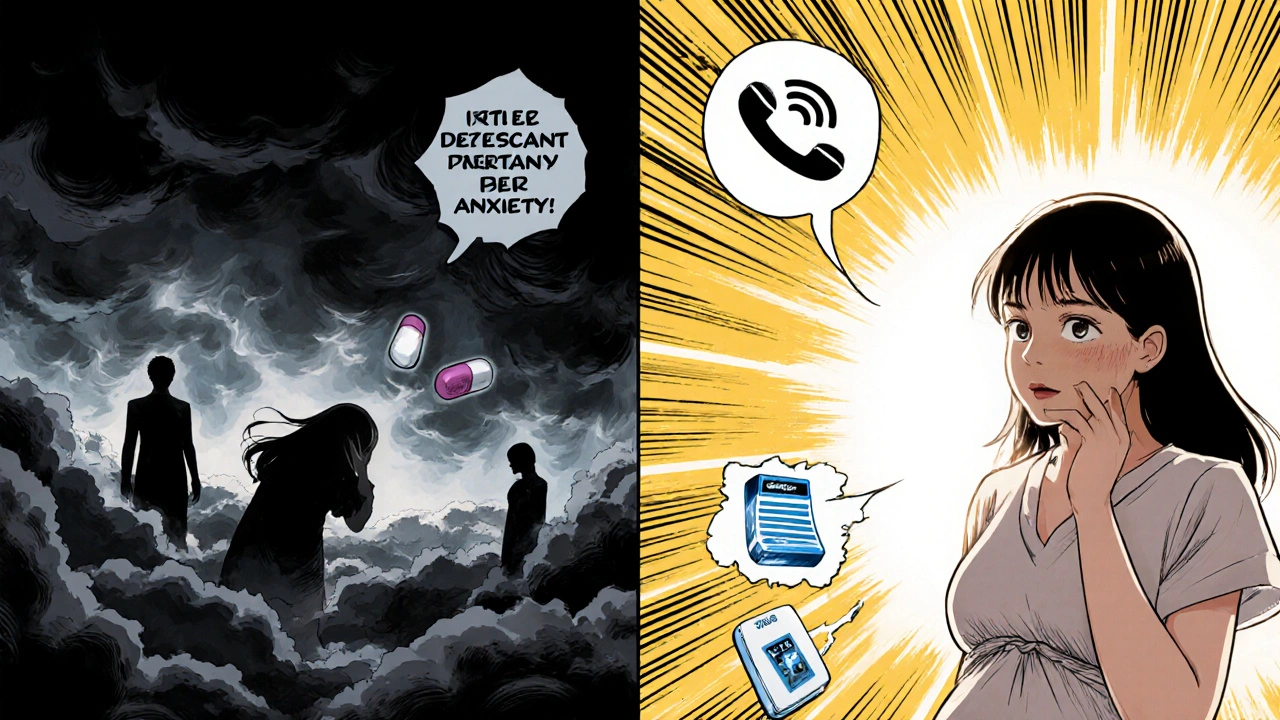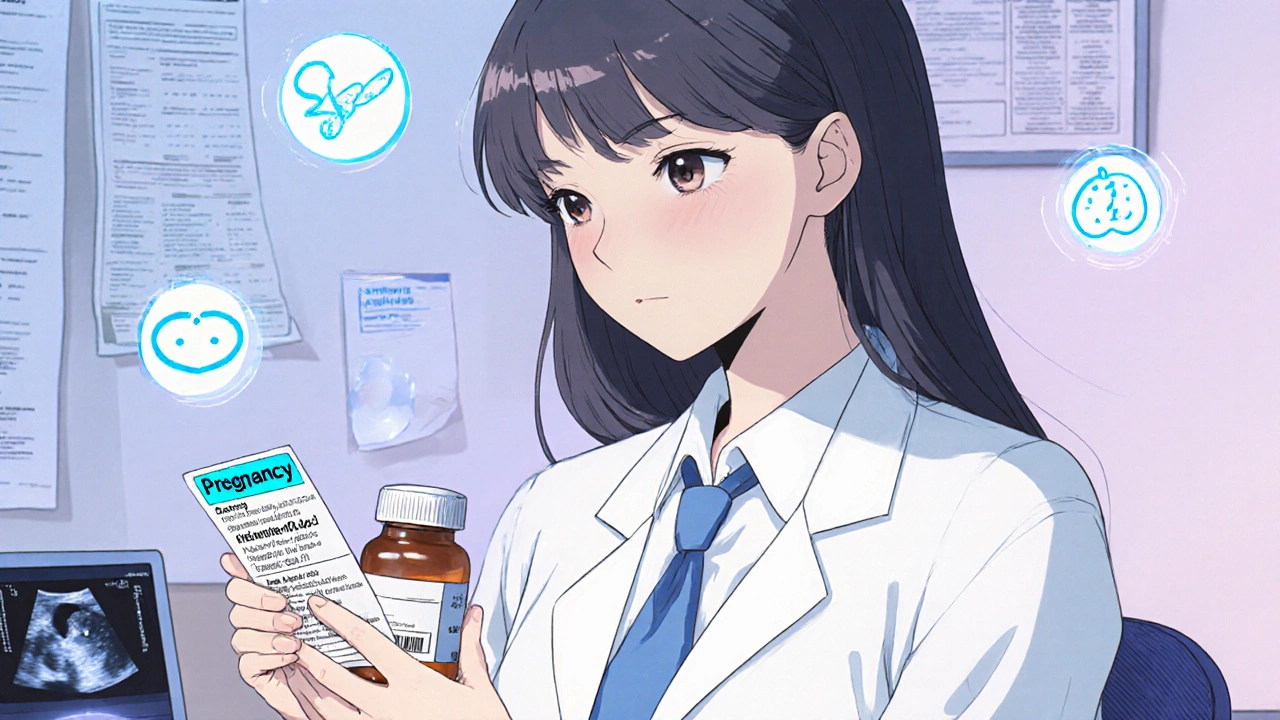When you find out you’re pregnant, one of the first things you might worry about is every pill, supplement, or over-the-counter medicine you’ve ever taken-or might need to take. Is that headache tablet safe? Should you keep taking your antidepressant? What about the acne cream you’ve used for years? These aren’t just questions-they’re life-changing decisions, made under pressure, with incomplete information. And you’re not alone. Around 70-90% of pregnant women use at least one medication during pregnancy, and half take four or more. Yet, for most of these drugs, we simply don’t have clear, reliable data on what they do to a developing baby.
Why Pregnancy Medication Safety Is So Complicated
Here’s the hard truth: pregnant women are almost never included in clinical trials. Why? Because of ethical concerns, legal risks, and historical trauma-like the thalidomide disaster in the 1950s, which caused severe birth defects. As a result, we’re left guessing. A 2020 study in JAMA Network Open found that only 5-10% of FDA-approved drugs between 2003 and 2012 had enough human data to even begin assessing safety during pregnancy. That means for the vast majority of medications, doctors are working with animal studies, scattered case reports, or nothing at all.
The old system made it worse. Until 2015, the FDA used letter categories-A, B, C, D, X-to rate pregnancy risk. But those letters were misleading. A “C” didn’t mean “moderate risk.” It meant “animal studies showed harm, but human data was lacking.” Many women and even some doctors misread them as clear warnings, leading to unnecessary medication stops. One study from Massachusetts General Hospital found that after the letter system was scrapped, inappropriate discontinuation of essential meds dropped by 18%. That’s a win-but we still have a long way to go.
What Replaced the Letter System?
In 2015, the FDA replaced the old letters with the Pregnancy and Lactation Labeling Rule (PLLR). Now, drug labels must include three clear sections: Pregnancy, Lactation, and Females and Males of Reproductive Potential. Instead of a single letter, you get detailed narrative text: what animal studies showed, what human data exists, risks by trimester, and even what happens if you stop the drug.
But here’s the catch: only 32% of these new labels include actual numbers-like “risk of birth defect increases from 1% to 3%.” Most still say things like “potential risk cannot be ruled out.” That’s not helpful when you’re trying to decide whether to keep taking your blood pressure pill. The American College of Obstetricians and Gynecologists (ACOG) has called this lack of quantification a major gap. Without numbers, it’s hard to weigh risks.
The European Medicines Agency (EMA) takes a different approach. They require drug makers to set up active pregnancy exposure registries for high-risk medications and enforce strict prevention measures-for example, women taking lenalidomide must use two forms of birth control and get monthly pregnancy tests. But even in Europe, a 2022 audit found that 41% of drug companies failed to meet basic monitoring requirements. So, while the systems are better, they’re far from perfect.
What Drugs Are Actually Dangerous?
Some medications have clear, serious risks-and they’re not always the ones you’d expect.
- Isotretinoin (Accutane): Used for severe acne, this drug causes severe birth defects in 20-35% of exposed pregnancies. That’s why it’s tightly controlled, and women must enroll in a special program before getting a prescription.
- Valproate: Used for epilepsy and bipolar disorder, it raises the risk of neural tube defects from the normal 0.1% to 1-2%. The FDA issued a Class I safety alert in 2022-its most serious level-warning against its use in pregnancy unless no alternatives exist.
- Mycophenolate mofetil: An immunosuppressant used after organ transplants. It’s linked to miscarriage and major malformations. Since 2023, the FDA has required weekly safety reporting for this drug in pregnant patients, a rare move.
- ACE inhibitors and ARBs: Common blood pressure drugs. They can cause fetal kidney damage, low amniotic fluid, and even death if taken in the second or third trimester.
On the flip side, many drugs once thought to be risky have been proven safe. For example, SSRIs like sertraline are now considered first-line for depression in pregnancy. Stopping them can be more dangerous than continuing them-especially since untreated depression increases the risk of preterm birth, low birth weight, and postpartum complications.

What Should You Do If You’re Pregnant or Planning to Be?
Don’t panic. Don’t stop meds cold turkey. Do this:
- Get a medication review before or right after you find out you’re pregnant. ACOG recommends a full list of everything you take-prescription, OTC, supplements, herbs-at your first prenatal visit. This takes about 22 minutes, but it’s worth it.
- Check the label. Look for the “Pregnancy” section on the drug package insert. It’s not always easy to find, but it’s there. Only 37% of pregnant women check it, according to the CDC. Don’t be one of them.
- Use trusted resources. The FDA’s “Medicine and Pregnancy” webpage is one of the most reliable sources, with a 4.3/5 rating from users. Mass General Hospital’s pregnancy medication hotline handled over 12,000 calls in 2022-and in 78% of those cases, they advised continuing the medication, not stopping it.
- Don’t ignore folic acid. Take 800 mcg daily from at least one month before conception through 12 weeks of pregnancy. It reduces neural tube defects by up to 70%. Most prenatal vitamins have it, but check the label.
Why So Many Women Stop Their Meds-And Why That’s Dangerous
One of the biggest problems isn’t the drugs-it’s the fear. A 2021 survey by the American Academy of Family Physicians found that 68% of OB-GYNs say they frequently encounter patients taking medications with no clear safety data. And what do they do? Many stop. The Society of Obstetricians and Gynaecologists of Canada found that 29% of women with chronic conditions-like asthma, diabetes, or depression-stop their meds as soon as they learn they’re pregnant.
But here’s what those women might not realize: untreated conditions can be worse than the meds. Uncontrolled asthma increases the risk of preterm birth. Unmanaged diabetes leads to stillbirth and large babies with birth injuries. Untreated depression raises the chance of poor prenatal care, substance use, and even suicide.
A Reddit post from a woman named u/PregnantWithQuestions sums it up: “My doctor told me to stop my antidepressant immediately. Now I’m having severe withdrawal and anxiety. Why isn’t there clearer guidance?” She’s not alone. On Drugs.com, 42% of negative reviews about pregnancy safety info say the advice is contradictory. That’s why so many women feel abandoned.

What’s Changing-and What’s Still Broken
There’s progress. The NIH just launched PREGNET, a $25 million project to track 100,000 pregnancies across 45 medical centers. IBM Watson Health predicts AI will predict medication risks with 70% accuracy by 2027 by analyzing millions of real-world records. Pharmaceutical companies are building pregnancy-specific apps-but only 12% have real user engagement.
But the system still has gaping holes. Pregnancy exposure registries capture less than 1% of all medication exposures during pregnancy, according to UC San Diego researcher Dr. Christina Chambers. That means safety alerts often come years too late. And funding? The March of Dimes estimates a $312 million annual gap in monitoring funding through 2030. Without more investment, we’ll keep playing catch-up.
Bottom Line: You’re Not Alone, and You Don’t Have to Guess
There’s no such thing as a 100% safe medication in pregnancy. But there is such a thing as a safer choice-and sometimes, the safest choice is to keep taking your medicine. The goal isn’t to avoid all drugs. It’s to use the right ones, at the right time, with the right support.
If you’re pregnant or planning to be, talk to your provider before you make any changes. Bring your pill bottles. Ask for the pregnancy section of the label. Use the FDA’s website. Call a pregnancy medication hotline if you’re unsure. And remember: you’re not being reckless if you need medicine. You’re being responsible.
For millions of women, the right medication isn’t a risk-it’s a lifeline.


8 Responses
Let’s be real-most OB-GYNs don’t know the difference between a Category C and a PLR narrative. I’ve seen residents panic and tell patients to stop SSRIs because they saw ‘potential risk’ on a label. Meanwhile, the real danger is the untreated depression that leads to preterm labor. The data’s messy, but the clinical consensus is clear: continuity of care beats fear-based discontinuation. Stop guessing. Bring your meds to the appointment. Ask for the FDA label. It’s not rocket science.
It is imperative to emphasize that the transition from the FDA’s letter-based system to the Pregnancy and Lactation Labeling Rule represents a significant advancement in pharmacovigilance. Nevertheless, the persistent absence of quantified risk data-such as absolute risk increases or number needed to harm-renders these labels insufficient for informed decision-making. Clinicians and patients alike require precise, evidence-based metrics to navigate therapeutic trade-offs during gestation. Until such data are systematically generated and mandated, we remain in a state of epistemic vulnerability.
Okay but like… why is no one talking about how the pharmaceutical industry literally does NOT want us to know what’s safe? 🤔 I mean, if they had real data, they’d be screaming it from the rooftops. Instead? Vague language, no numbers, and a whole lot of ‘potential risk cannot be ruled out.’ 🙄 And don’t even get me started on how they still don’t fund proper pregnancy registries. It’s all profit-driven. We’re guinea pigs with a side of folic acid. 💊🤰 #pharmaisnotyourfriend
Don’t stop meds. Talk to your doctor. Take folic acid.
That’s it.
In many parts of the world, including my home in Nigeria, pregnant women have no access to these labels, no hotlines, no FDA webpages. They rely on grandmothers, traditional healers, or the last person who took a pill and lived. The fact that we’re having this conversation in the U.S. with all our data and tech is a luxury. But we must remember: safety isn’t just about labels-it’s about access. A woman in Kano doesn’t need a PLR update. She needs a pill. And someone who won’t judge her for taking it.
So let me get this straight-women are being told to stop life-saving meds because the data isn’t perfect… but the data on stopping meds? That’s even worse. Classic case of ‘better safe than sorry’ backfiring spectacularly. Also, I love that the FDA now has a 4.3/5 rating on their pregnancy page. That’s higher than my last Tinder date. 🤷♂️
Wait, so if I took ibuprofen at 6 weeks and didn’t know I was pregnant, am I a monster? Do I need to turn myself in? I just want to know if my kid is gonna be fine or if I should start writing a letter to them now. Please just tell me if I ruined everything.
Of course the FDA says ‘potential risk cannot be ruled out’-because they’re in bed with Big Pharma. The thalidomide disaster? A cover-up. The real danger isn’t the drugs-it’s the system that lets them be approved without proper testing on pregnant women. They’re using us as test subjects and calling it ‘ethics.’ Wake up. This is eugenics by prescription. And they’re hiding the numbers so you’ll panic and stop your meds. But guess what? If you stop your meds, you’re the one who’s putting the baby at risk. They want you scared. Don’t be. Demand transparency. Or don’t have kids at all. Either way, they win.